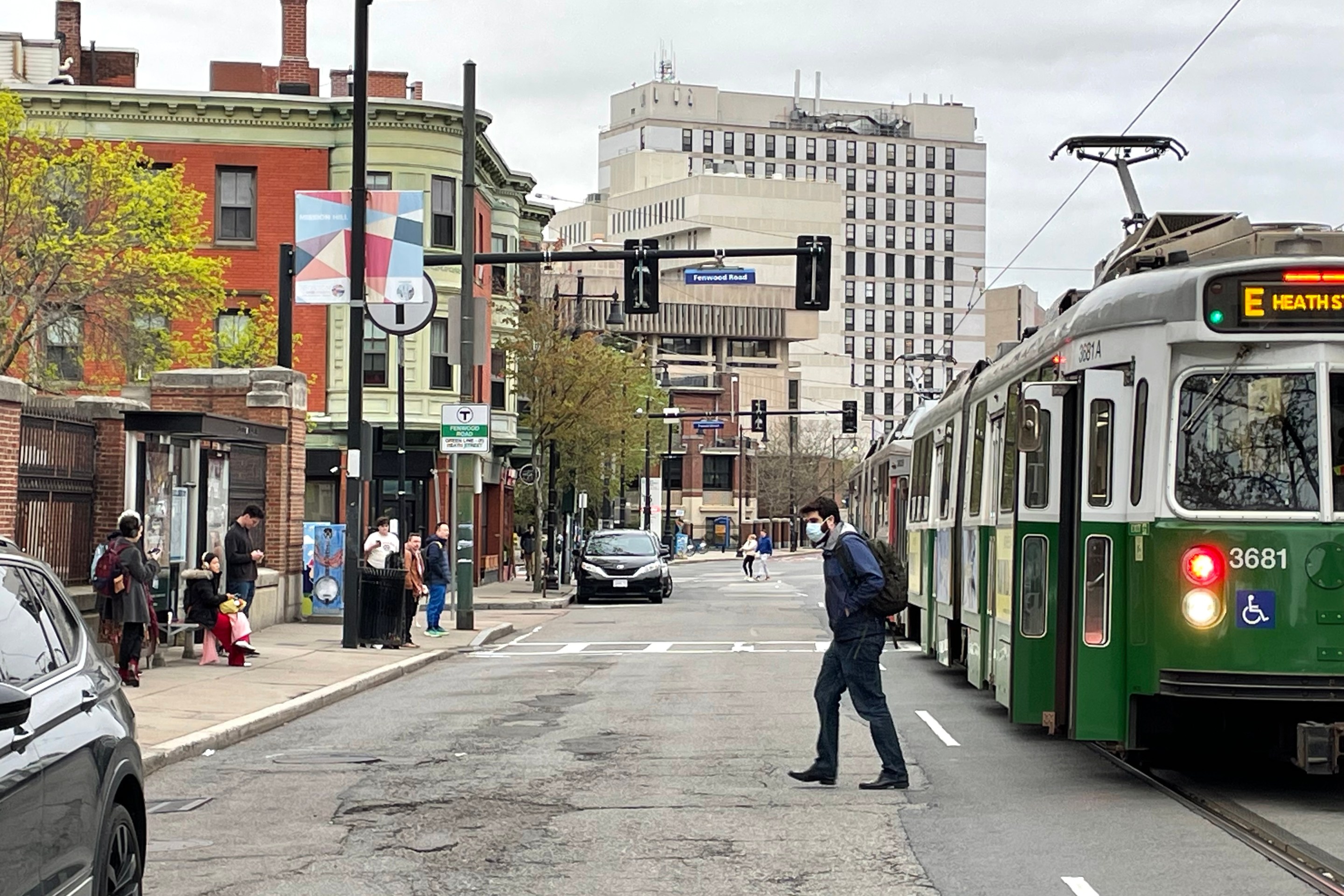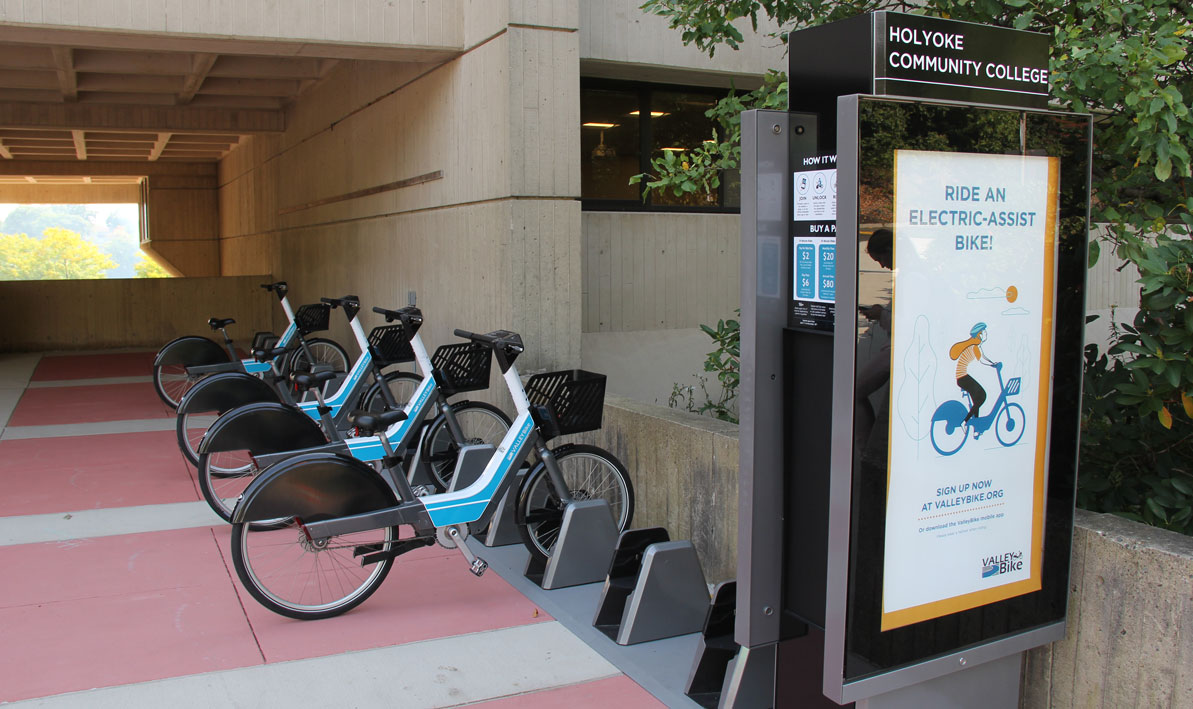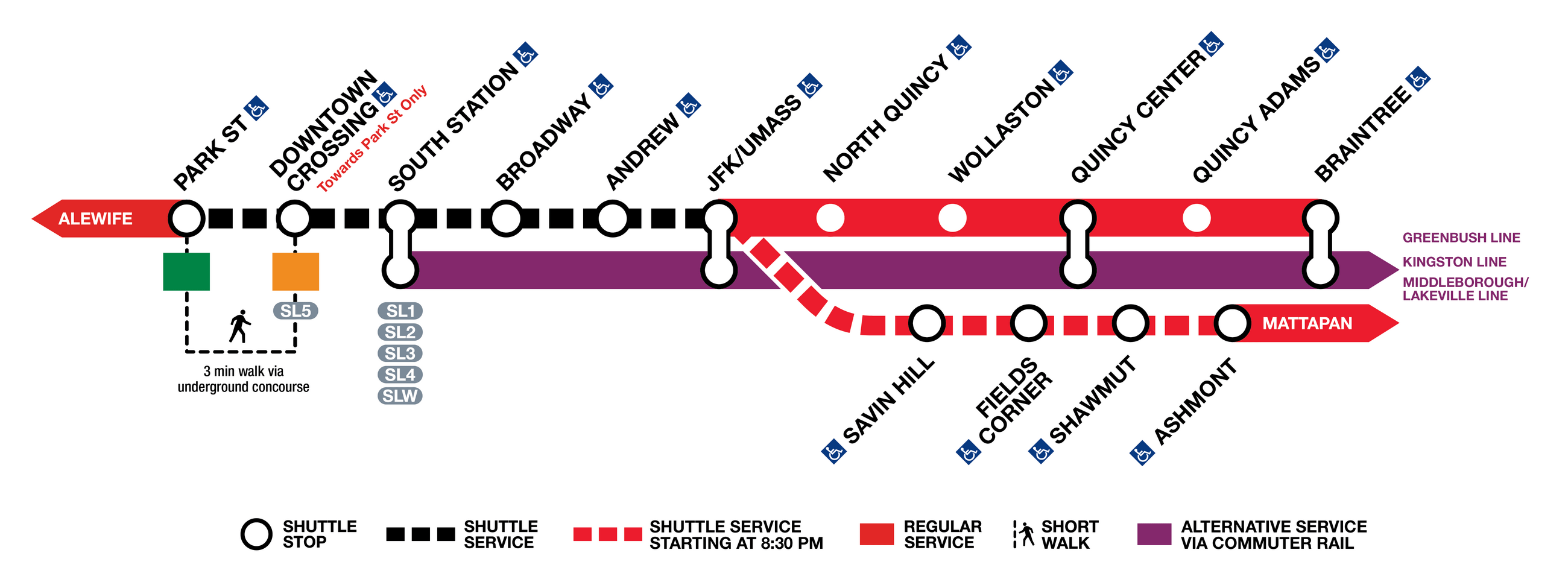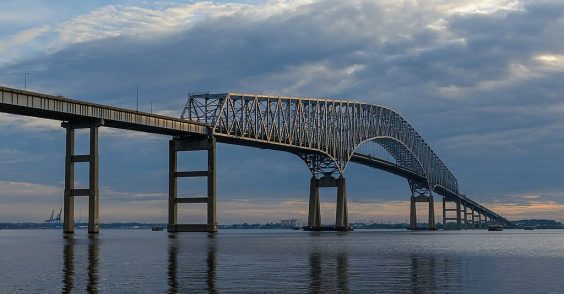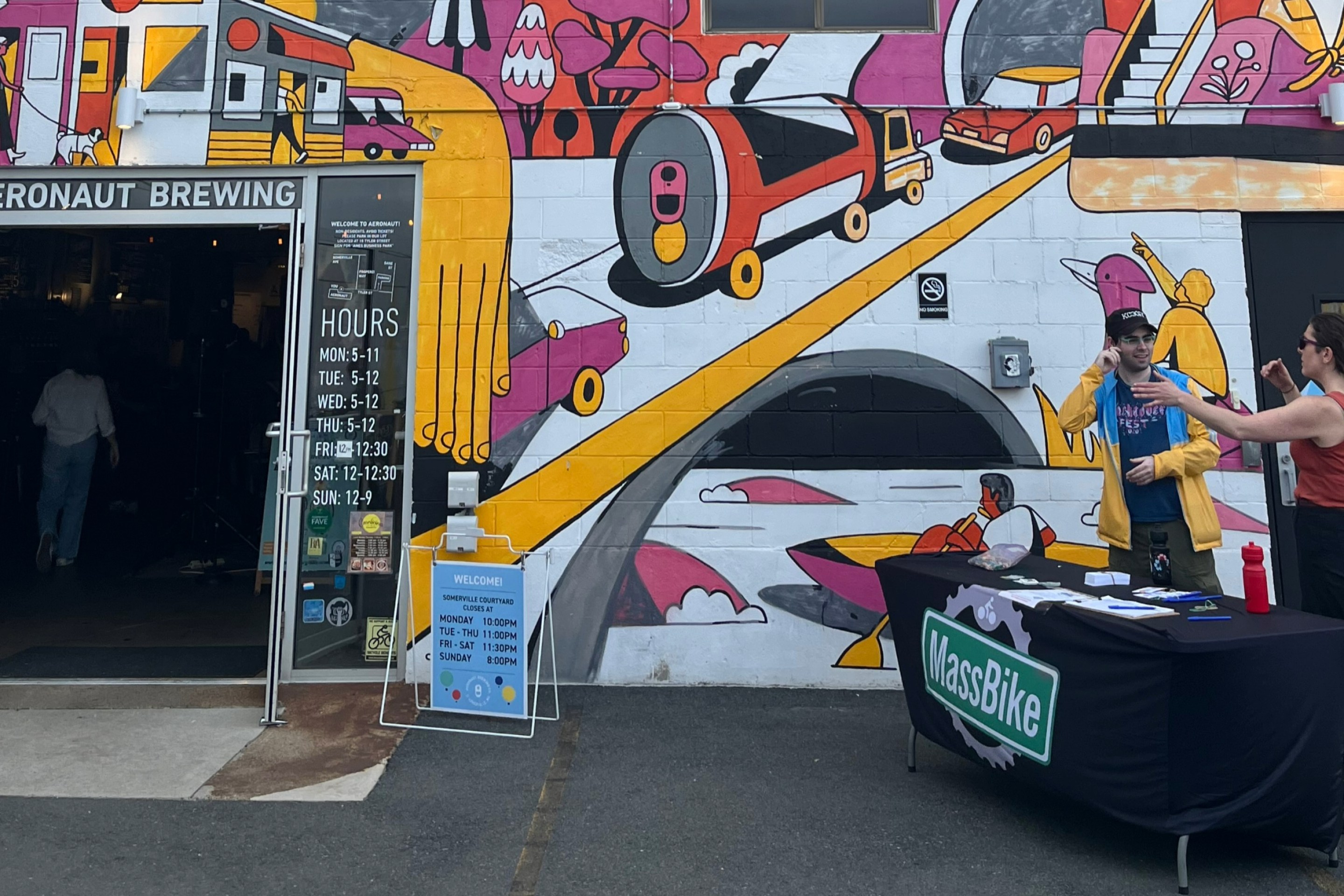Gov.-Elect Healey’s Plans to Clean Up Charlie Baker’s Messes
10:25 PM EDT on August 16, 2022
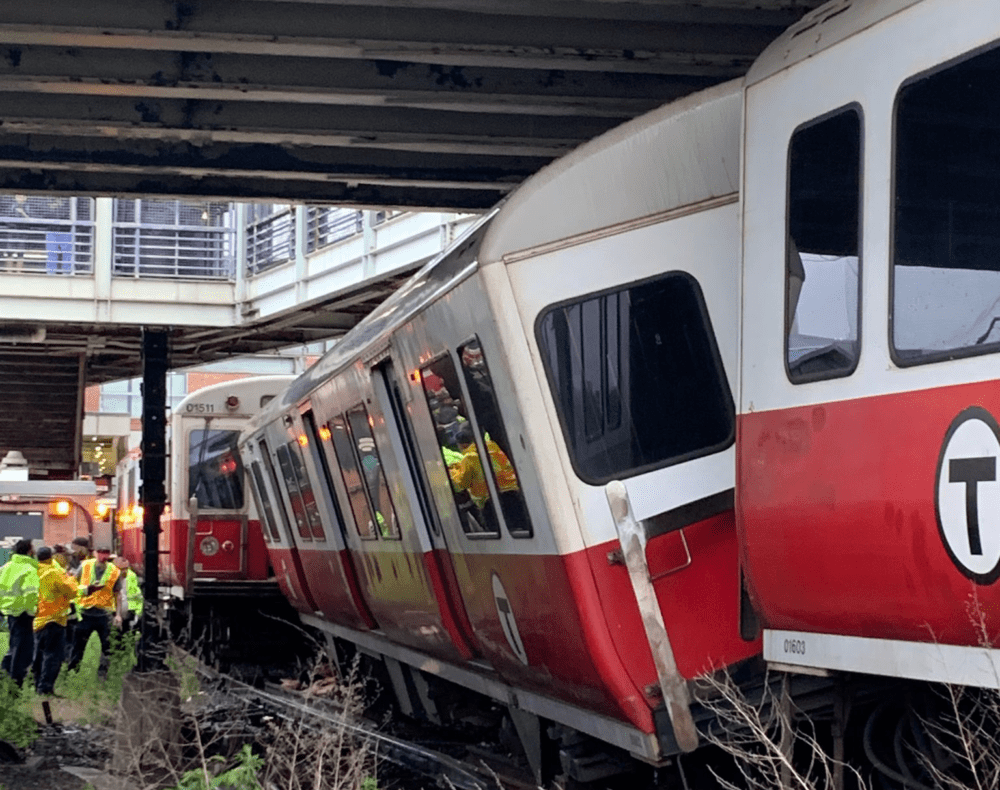
A derailed Red Line car blocks the tracks at the JFK/UMass station on June 11, 2019. Photo courtesy of the Boston Fire Department.
Editor's note: this story was originally published on Aug. 16, 2022; we've re-published it under a new headline in light of the election results.
Maura Healey’s plans for fixing the MBTA involve major leadership and governance changes at the agency and beyond, and lean on federal funding to try to fill the gaps from underinvestment in transportation in Massachusetts.
The attorney general and front-runner for governor released a lengthy transportation plan on Tuesday, calling recent safety issues her “first challenge” if elected and laying out ideas for improving the T, regional rail, and more.
It comes as the Boston area enters a full-blown transportation crisis, with the T’s Orange Line set to shut down completely for a month starting on Friday amid myriad safety and reliability issues which have shaken the region.
Healey’s plan to address the T’s woes focus largely on bringing in new officials to oversee change, and shifting the way that the agency is governed. She would appoint a Transportation Safety Chief to audit the state’s transportation agencies, looking at not only trains and buses, but safety for pedestrians and bicyclists.
She would also change the leadership structure of the T, promising to appoint a new general manager and two deputy GMs to oversee operations and capital planning.
“These three leaders will work closely together and collaborate to ensure that the professional know-how is there and influences every decision, while also ensuring that the GM is actively involved and informed in key decision making,” the plan says.
The candidate also promised to shift authority to the MBTA’s board to “intervene and make tough decisions when necessary.”
“She will empower the Board to partner and collaborate with the GM and the leadership team, and challenge, when appropriate, and intervene if necessary,” the plan says.
Healey also makes promises intended to ease the costs of public transportation for riders, including implementing low-income fares and unlimited bus transfers, and “outlining a pathway to fare free buses throughout the Commonwealth.”
She calls for transitioning the Fairmount line to rapid transit, and more broadly to improve and expand service to under-served neighborhoods.
Paying for it
Funding new transportation initiatives, let alone filling the T’s existing budget gaps, is a tall order.
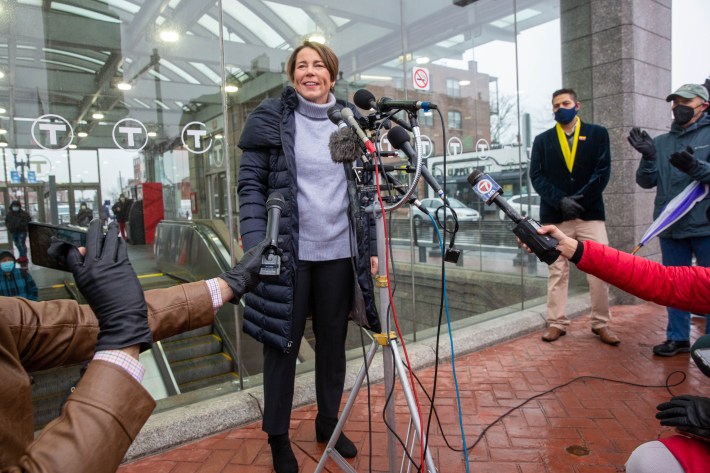
Healey calls for using a combination of funding streams, with an emphasis on federal money available from the Biden administration’s infrastructure law.
“There will be competition for these federal dollars and Massachusetts will need to be thoughtful and aggressive in how it pursues this opportunity,” the plan says.
To that end, she calls for creating a task force focused on getting the most possible out of federal funds.
Massachusetts started receiving increased federal funding for its transit systems earlier this spring, but the scale of those increases pales in comparison to the Commonwealth’s needs.
For instance, under the new infrastructure law, the state’s total allocation of federal transit “state of good repair” grants increased from $151 million in 2021 to $229 million in 2022.
But the MBTA alone plans to spend $1.5 billion on reliability and modernization projects in 2022, and is budgeting $1.6 billion for similar projects in 2023.
Other financing options that Healey calls out include the Fair Share Amendment, which would raise taxes on the wealthy and use the revenue for transportation infrastructure if it passes in a statewide referendum this fall, and Chapter 90, which apportions funds to cities and towns via a formula based on their road miles, population and employment.
“Maura believes that there is not one specific funding source that will solve the long-term underinvestment in our transportation system,” the plan says.
Regional rail
Healey’s plans for expanded transportation access extend to all corners of the state – and hint at both a change in name and purpose for the T’s commuter rail lines.
“The name “commuter rail” has hindered our ability to maximize the potential for a regional rail system in Massachusetts,” the plan says. “By thinking so literally about what these rail lines are used for, presumably rush hour traffic to move people from home to 9-5 hour work and back again, we are squandering an opportunity to build a stronger and more inclusive state economy.”
The MBTA has an option to end its contract with Keolis in 2025, and the AG calls that deadline an opportunity to think through the procurement process and look at ways to expand frequency and service.
The plan also says Healey will try to build on momentum growing in recent years for East-West rail. She said she’ll name a West-East Rail Director within MassDOT and make the project a priority.
“Attorney General Healey’s transportation plan is comprehensive, thoughtful and forward looking,” said former Massachusetts Transportation Secretary Jim Aloisi in an email to Streetsblog.
“I am pleased beyond words that she is embracing the idea of true regional rail, and that she is dealing directly with the critical issue of transit funding for operating expenses,” Aloisi said. “Healey’s plan demonstrates that under strong gubernatorial leadership, we can invest in urgent safety and service delivery needs while also investing in projects like the Red/Blue Connector, West Station and an east-west rail system, each of which elevates regional access and equity.”
Sam Mintz is a Boston-based journalist covering transportation and energy policy. Before moving back to his hometown in 2021, Sam spent five years in D.C. covering Congress and federal agencies for Politico and E&E News. He lives in Brighton, equidistant to stops on the B,C, and D branches of the Green Line.
Read More:
Stay in touch
Sign up for our free newsletter
